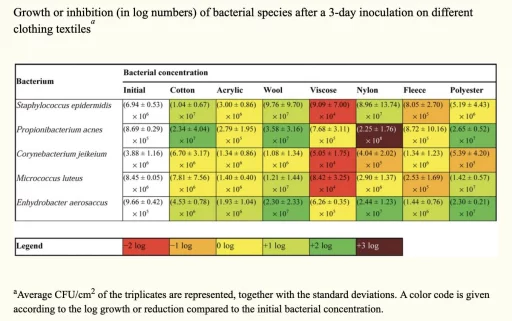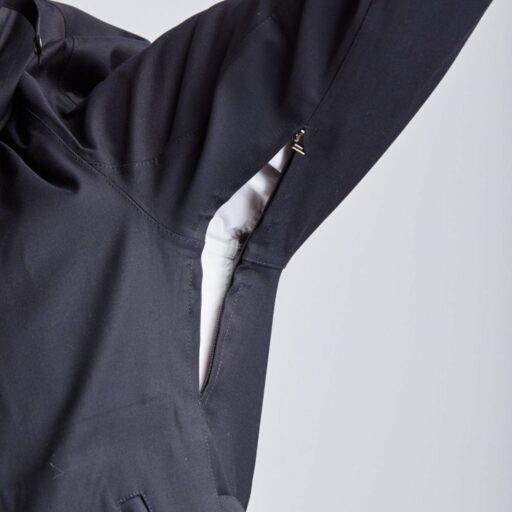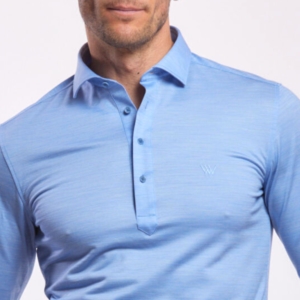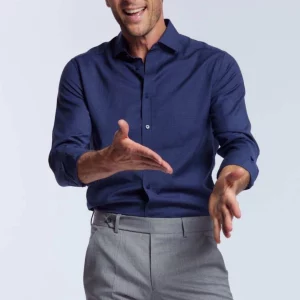Who's heard of layering, or the 3-layer system?
It's an essential rule of the sports wardrobe: choose your layers wisely so you don't get hot or cold.
The secret is to adapt your clothing to the intensity of the effort you plan to make and the outside temperature, while ensuring that perspiration is wicked away!
In the city, as we're away for the whole day without necessarily having the opportunity to change, it's even more important. To optimise our well-being, we need to :
- In town, as we're leaving for the whole day without a breathable ‘first layer
- a breathable, warm ‘second layer
- a ‘third layer’ to protect against the cold and bad weather
1) Layering aims to keep you cool and dry
Sweating is the main cause of discomfort during exercise, making our clothes stick to our skin.
To reduce this discomfort, we must first limit the rise in our body temperature.
And encourage the rapid evacuation of moisture to the outside.
When hiking, here's how the three-layer system optimises well-being and performance (attached is the diagram of the runner of the woods site)

So to define what's good for the city, we'll simply adapt the reasoning to our more formal outfits.
2) Can layering be adapted to a city wardrobe?
Thanks to Wolbe, Yes !
1) the base layer must be breathable
It's the one we have direct contact with our skin. In town, this will be a shirt, a polo, a poloshirt,or even a t-shirt that we'll put under a button-neck sweater.
This is certainly the most important of the triptych, and often the most neglected. By evacuating transpiration from the skin, it prevents the sensation of cold due to evaporation. It should absorb transpiration easily and dry quickly.
The merino wool is undoubtedly the best natural material in the field. The scales positioned on its fibre trap air bubbles that create an insulating film. This keeps you cool when it's hot and warm when it's cool. This ‘regulated’ temperature greatly delays the onset of perspiration!
The Tencel® keeps it cool.
Polyester is effective in terms of drying but not odour management.
Finally, cotton absorbs well but doesn't dry properly. When you consider that 95% of men's shirts are cotton...there's a first inconsistency!
2) the second layer is thermal and breathable
Its role will be to slowly dissipate the heat produced by the body, to maintain a constant temperature. And above all to let the water vapour through so as not to create a hammam effect under the garment.
The warmth of this second layer must therefore be proportionate to the weather and the intensity of the activity. A single piece of clothing is therefore generally not enough for every situation.
In town, the second layer, will generally be a pull, a blazer, a lightweight blouson, a suit jacket or even a small sleeveless down jacket -body warmer-.
In terms of materials, there's nothing new when it comes to breathability and odour. Merino wool, Tencel® up front. Polyester not recommended if sensitive to odours.
Cotton not recommended if significant movement.

3) the third layer must be protective
It must be highly effective against the elements: cold, rain, wind. Otherwise the heat will escape. And breathable if you're planning to pick up the pace.
Alternatively a car coat, a coat, a raincoat, a parka, a windbreaker jacket.
Cette troisième couche est sans doute la plus chère et la plus technique. A vous de définir l’exigence qui vous convient ! L’éventail des protections -et donc des prix- est très large.
Between a water-repellent jacket (chemically treated at the end of production to make the water slide off... guaranteed only for a certain number of washes) and a completely waterproof jacket (thanks to a membrane resistant to 20m of water and full thermo-bonding), prices can be multiplied by 10.
Once again, the breathability aspect of this third layer should not be overlooked: intrinsic breathability of the fabric (thanks to breathable membranes from Sympatex® or Goretex®) or zips under the armpits...

For example, VISCOSE, a wood pulp derivative like Tencel® (but chemically treated in a much less eco-responsible way) was analysed - in the same study by the University of Gent - as being free from malodorous bacteria. So it's a good choice for interior linings.
3) Spotlight on tips for optimal layering
- Be demanding about the ventilation of the last layer. It's just as important as waterproofing if you're on the move. So there are several options: zips under the armpits, vents with a few holes...

- Choose panniers over rucksacks if you're cycling. No garment can really absorb the significant impact of the bag's pressure on your back... (here the Helmut made in France brand)



